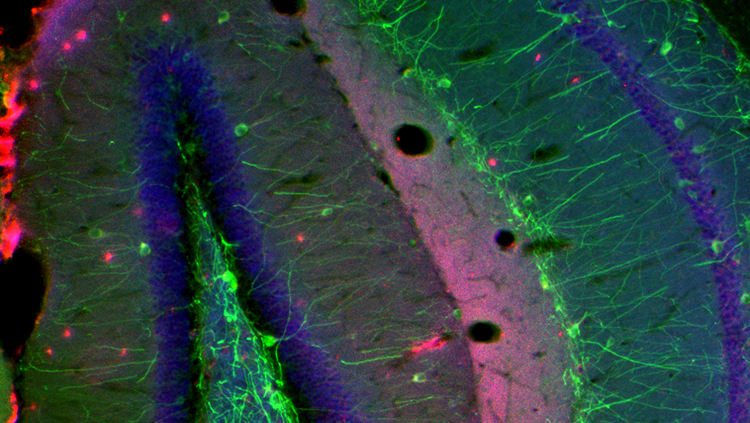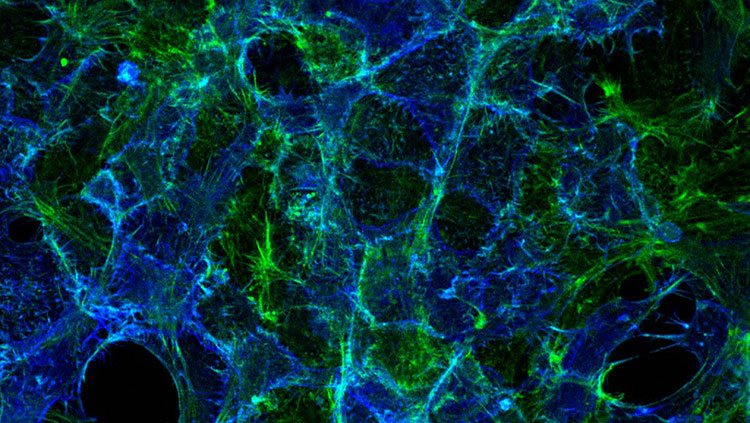Bacteria in the Brain
- Published26 Feb 2019
- Reviewed26 Feb 2019
- Author Michael W. Richardson
- Source BrainFacts/SfN

Some bacterial infections such as Lyme disease can wreak havoc on the brain. While the blood brain barrier is an excellent bodyguard for the brain, some bacterial molecules or products can pass through — even after antibiotics have killed the bacteria elsewhere in the body. If these molecules can reach the brain, it can be hard to identify the problem quickly. Rather than kill neurons outright, bacterial lipopeptides (labeled in small spots of red in this picture of a mouse hippocampus) disrupt neuronal activity and connections. Those neurons (among those labeled in green) and their synapse locations (labeled in blue) don’t disappear — their connections are just rearranged, upending the complex connections that power the brain’s activities. This is hard to see from normal brain scans, so the damage caused by infection can be difficult to spot. Researchers are currently investigating how bacterial infections damage these connections, in the hopes of finding a reliable treatment for this rare condition.
CONTENTPROVIDEDBY
BrainFacts/SfN
















